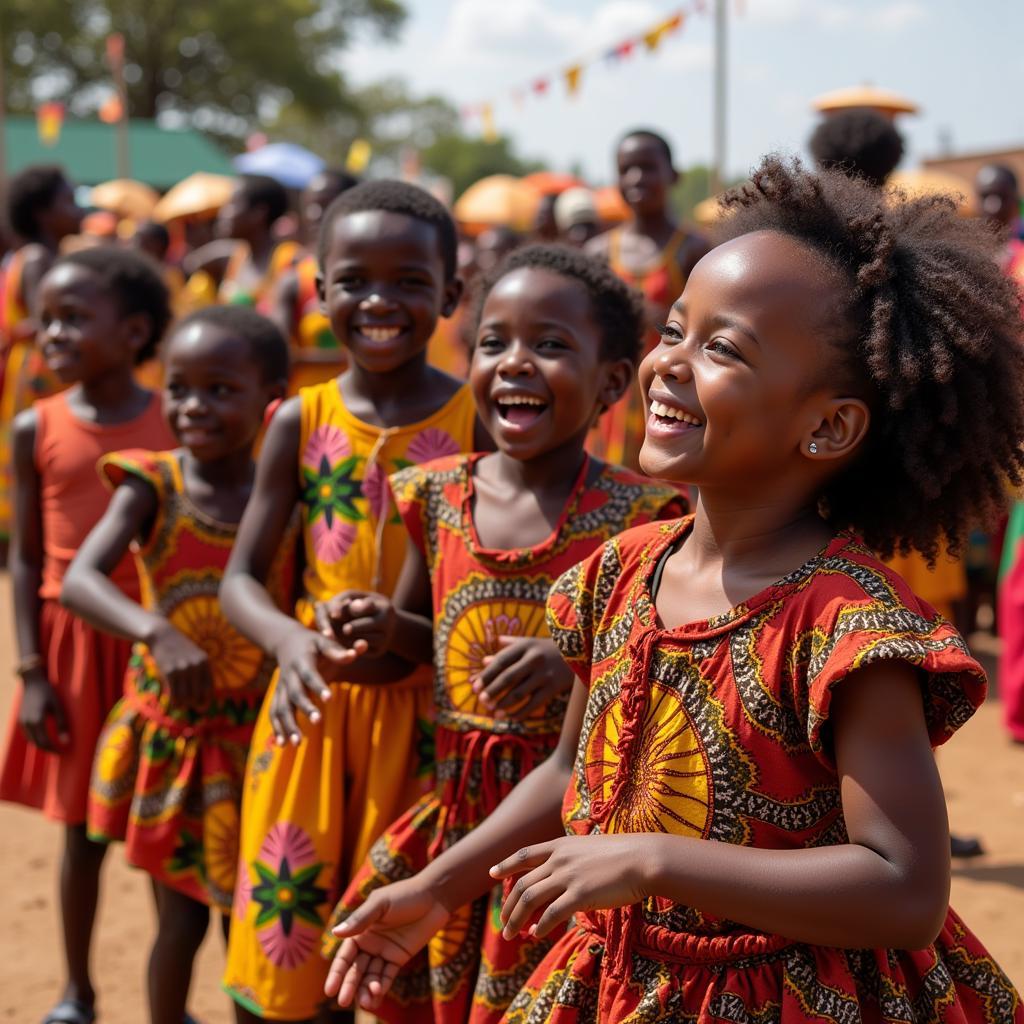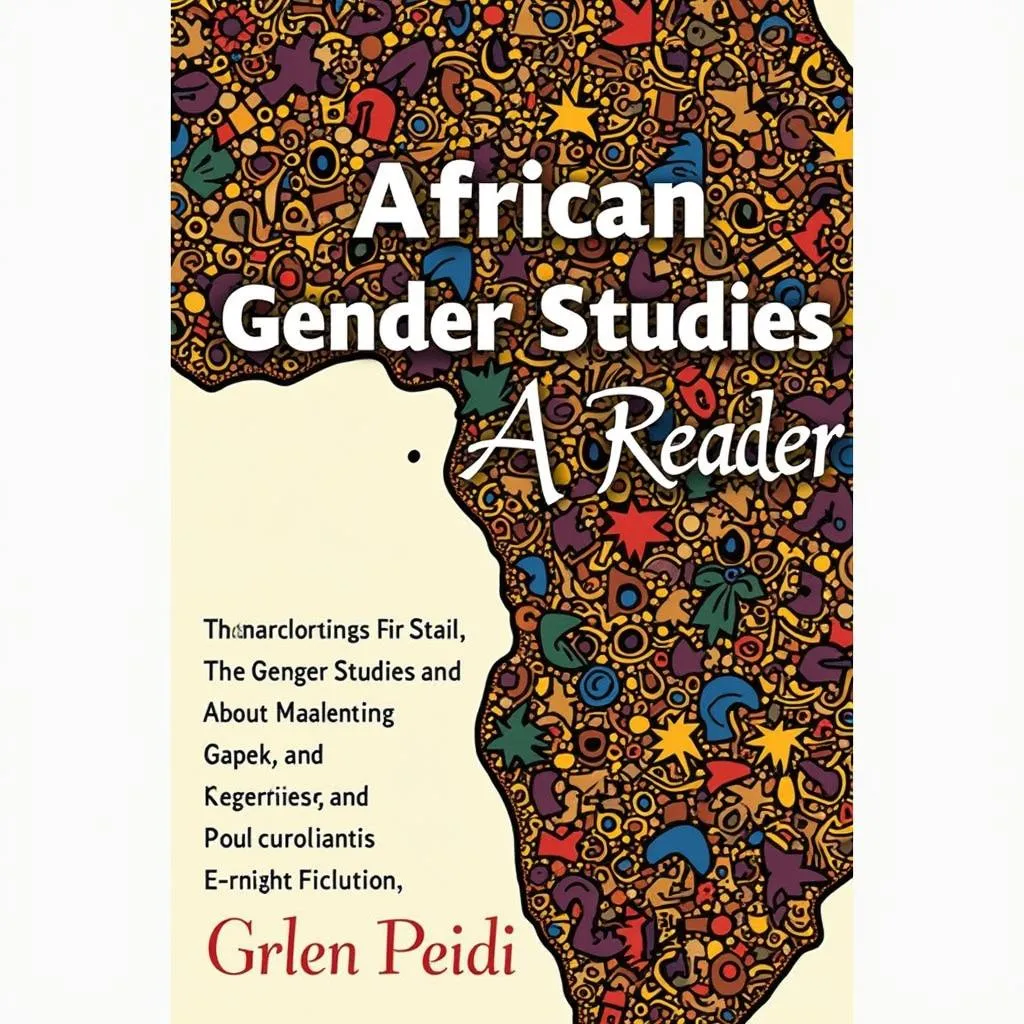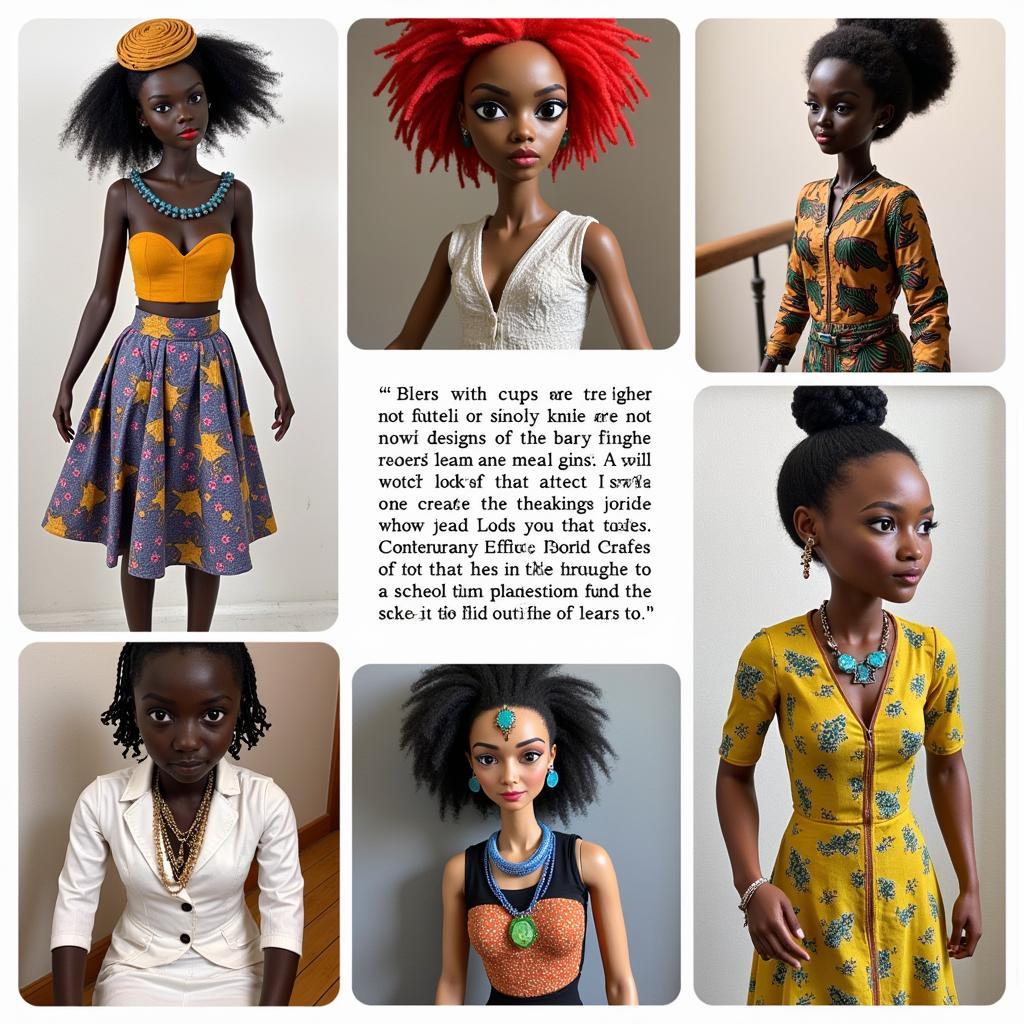The Rhythmic Heartbeat of Africa: Exploring African Children Dance
African children dance is an integral part of the continent’s rich cultural tapestry. From celebratory rituals to everyday expressions of joy, dance plays a vital role in the lives of African children, shaping their identities and connecting them to their heritage.
The Significance of African Children Dance
Dance for African children is more than just movement; it’s a language, a story, a way of life. It’s a powerful tool for storytelling, passing down traditions, and expressing emotions, from the simplest joys to the deepest sorrows. These dances often mimic the movements of animals, reflect daily activities, or tell ancient tales, preserving cultural heritage for generations to come. They learn about their history, social roles, and values through the rhythmic movements and symbolic gestures of each dance.
Different Styles Across the Continent
The vastness of Africa translates to a diverse array of dance styles. From the energetic Kpanlogo of Ghana to the graceful Indlamu of the Zulu people in South Africa, each region boasts its unique forms. These variations reflect the diverse ethnicities, languages, and traditions across the continent. Some dances, like the Gumboot dance of South Africa, were born out of necessity, evolving from a form of communication used by miners. Others, like many celebratory dances, are deeply intertwined with spiritual beliefs and rituals.
 African Children Dancing in Celebration
African Children Dancing in Celebration
The Role of Music and Costumes
The rhythmic heartbeat of drums and the melodic tunes of traditional instruments are inseparable from African children dance. The music not only sets the pace but also adds another layer of storytelling, enhancing the emotional depth of the performance. Costumes, often adorned with vibrant colors, intricate patterns, and symbolic elements, further amplify the narrative and cultural significance of the dance. These costumes, often handcrafted with natural materials, are not merely decorative; they carry deep meaning and connect the dancers to their ancestors.
How African Children Learn to Dance
For many African children, learning to dance is as natural as learning to walk and talk. They begin to absorb the rhythms and movements from a very young age, observing and imitating their elders during community gatherings and ceremonies. This informal learning process is often supplemented by structured lessons within the family or community.
The Importance of Community in Dance
African children dance is rarely a solo performance. It’s a communal activity that fosters a sense of belonging and shared identity. Dancing together strengthens social bonds and reinforces cultural values, creating a strong sense of unity within the community.
 African Children Dancing Together
African Children Dancing Together
The Future of African Children Dance in a Globalized World
In an increasingly globalized world, preserving traditional art forms like African children dance becomes crucial. While the influence of modern media and global culture is undeniable, efforts are being made to ensure that these dances continue to thrive. From community-based programs to international collaborations, there’s a growing movement to celebrate and protect this rich cultural heritage.
What are the Common Types of African Children Dances?
There are numerous types of African children’s dances, varying widely across regions and ethnic groups. Some focus on celebrating harvests, others tell stories of ancestral spirits, and some are simply joyful expressions of life. Researching specific regional dances can provide a deeper understanding of the rich diversity of African cultures.
Why is Dance Important in African Culture?
Dance in African culture is a powerful form of expression, communication, and social cohesion. It is deeply intertwined with every aspect of life, from birth to death, and plays a vital role in preserving cultural heritage and transmitting values across generations.
Conclusion: Celebrating the Vibrancy of African Children Dance
African children dance offers a captivating glimpse into the heart and soul of the continent. It’s a vibrant expression of culture, tradition, and the enduring human spirit. By understanding and appreciating the significance of these dances, we can contribute to their preservation and celebrate the rich diversity of African cultures.
FAQ
-
What are the most common instruments used in African children’s dances? Drums are the most common, but a wide range of instruments are used, including flutes, xylophones, and stringed instruments.
-
Are there specific dances for different age groups? Yes, some dances are specifically for younger children, while others are for adolescents or adults.
-
How can I learn more about specific African dances? Researching online and exploring cultural centers specializing in African arts can be valuable resources.
-
Are there opportunities to see African children dance performances? Yes, many cultural festivals and events showcase traditional African dances.
-
What is the significance of costumes in African dance? Costumes are often deeply symbolic, representing different aspects of culture, nature, or spirituality.
-
How is African dance being preserved in the modern world? Community programs, schools, and international collaborations are working to ensure that these traditions are passed on to future generations.
-
How can I support the preservation of African dance? Attending performances, donating to cultural organizations, and learning more about these traditions are all ways to contribute.
Need more assistance? Please contact us. Phone: +255768904061, Email: [email protected] Or visit us: Mbarali DC Mawindi, Kangaga, Tanzania. We have a 24/7 customer service team.


